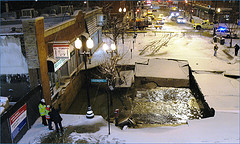 In a paper that I’d have never seen if it wasn’t for Twitter, Loes Knaapen of the Université de Montréal Public Health Research Institute reports the scholarly musings on a bunch of conversations with ‘EBM’ guideline developers, attendance at conference events, and a lot of reading around the subject of Guideline Creation. At the heart of these musings is the dilemma
In a paper that I’d have never seen if it wasn’t for Twitter, Loes Knaapen of the Université de Montréal Public Health Research Institute reports the scholarly musings on a bunch of conversations with ‘EBM’ guideline developers, attendance at conference events, and a lot of reading around the subject of Guideline Creation. At the heart of these musings is the dilemma
‘how to address the challenges of providing evidence-based advice to address questions for which the evidence is lacking, of poor quality, immature or incomplete’
We’ve written here often about the nature of not-knowing, the challenges of uncertainty, and what can we do in the absence of The Answer. The key elements that emerge are about how Evidence (capital E, the reports of the sciency trials and the like) interacts with non-Evidence (judgement, relevance and the like) to try to knit something that can transparently return and answer to the questions asked “in the gaps”.
The Evidence is defined by the hierarchy and it’s variants, but this itself has elements of ‘faith’ rather than objective judgement. The selection process for Evidence include relevance, as decided by the stakeholders and developers; biological and pathophysiological thinking; the choice of the PICO to ask, and we’ve discussed before the lack of patient involvement in this, frequently; administrative and practical contexts, like drug licensing or availability of roles. This is then filtered by considering ethical aspects of the recommendation, expertise and existing practice. Some of this is captured if you consider the GRADE system, some of it remains rather elusive.
How this helps us in practice is, I think, fairly fundamental. It encourages us to think of EBM as a broad process we can use regardless of the paucity of the existing literature, and to be transparent about how we are selected the ‘in’ and the ‘out’ and where we are drawing on existing beliefs and actions. Not to discount those things, but to be aware of them, and in debate, pinning down which bits are under discussion.
– Archi